Health
New AI tech aims to detect the origin of cancers for optimal treatments: ‘An important step’

For a small percentage of cancer patients, doctors are unable to determine where in the body the disease originated.
To help pinpoint the origin of the cancers of unknown primary (CUP), researchers at the Massachusetts Institute of Technology (MIT) have created an artificial intelligence model that analyzes the patient’s genetic information — and predicts where the tumor first appeared.
When using the new AI model for 900 patients with cancers of unknown origin, researchers found that they could accurately classify at least 40% of tumors, according to a study published in Nature Medicine.
WHAT IS ARTIFICIAL INTELLIGENCE (AI)?
This information could help doctors recommend the best targeted treatments for these cancer patients, researchers say.
“Our study showed that OncoNPC, the AI model that we developed, can leverage routinely collected genomic data to assist in clinical decision-making for patients with cancer of unknown primary (CUP) tumors, which are conventionally difficult to diagnose and have limited treatment options,” Intae Moon, an MIT graduate student in electrical engineering and computer science who is lead author of the study, told Fox News Digital.
Researchers at the Massachusetts Institute of Technology (MIT) have created an artificial intelligence (AI) model that analyzes the genetic information and predicts where the tumor first appeared. (iStock)
“We demonstrated that CUP tumors share genetic and prognostic characteristics with their predicted cancer types and may benefit from currently existing treatments guided by OnoNPC predictions.”
AI TECHNOLOGY CATCHES CANCER BEFORE SYMPTOMS WITH EZRA, A FULL-BODY MRI SCANNER
The researchers also found that 15% of the patients could have received targeted treatments if the origin of their cancer had been detected.
Study had limitations, researchers say
Although the researchers used data from multiple centers to train its AI model, Moon pointed out that the clinical data used for their detailed analysis came from just one institution.
This could limit how well the findings apply to other settings.

The information from MIT’s study could help doctors recommend the best targeted treatments for cancer patients, researchers say. (iStock)
“Another limitation is that a large portion (83.2%) of the patients in the training data were White, which could mean the tool may be more accurate for White patients,” Moon said.
“Though it still performed reasonably well for other ethnicities, a more thorough investigation is required to ensure that the model is benefiting a diverse patient population.”
AI TECH AIMS TO DETECT BREAST CANCER BY MIMICKING RADIOLOGISTS’ EYE MOVEMENTS: ‘A CRITICAL FRIEND’
Additionally, only 22 of the most common cancer types were considered for classifying tumors — which means if a tumor belongs to an unlisted type, predictions could be less certain.
“A more thorough investigation is required to ensure that the model is benefiting a diverse patient population.”
“We hope to gradually resolve this as we gather and collect more comprehensive data,” Moon said.
AI SHOWN TO PREDICT RISK OF PANCREATIC CANCER WELL BEFORE SYMPTOMS APPEAR
“Finally, though our findings show that patients with CUPs classified by our algorithm have a better clinical response to the ‘matching’ treatments, this is ultimately still a retrospective analysis,” he added.
“A prospective randomized study would be needed to confirm that the relationship is causal.”
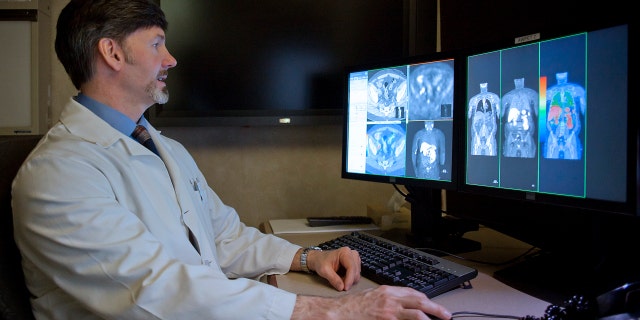
When using the new AI model (not shown) for 900 patients with cancers of unknown origin, researchers found that they could accurately classify at least 40% of tumors. (Ariana Lindquist/Bloomberg via Getty Images)
Moon noted that the researchers see OncoNPC as an algorithm to be used in conjunction with conventional cancer treatments — not as a replacement.
“It’s important to validate our study results across different institutions, which we see as crucial next steps,” he said.
“Over the longer term, we hope that this motivates more study of the heterogeneity within CUPs and leads to even more treatment options.”
AI APP HELPS AGING ADULTS MANAGE THEIR PRESCRIPTIONS WITH ONE PHOTO: ‘YOUR PERSONAL HEALTH ASSISTANT’
Looking ahead, the researchers hope to integrate unstructured data like pathology images and clinical notes, enabling the AI to achieve a more holistic understanding of tumors.
“The findings are encouraging, and they provide important insight into how we might approach such complex cases.”
“This could potentially improve its ability across various tasks, including directly predicting survival and optimal treatments,” Moon said.
‘An important step’
Dr. Tinglong Dai, professor of operations management and business analytics at the Johns Hopkins Carey Business School in Baltimore, Maryland, was not part of the MIT research. But he said he sees this study as an “important step toward identifying optimal treatment plans for patients with cancer of unknown origin.”
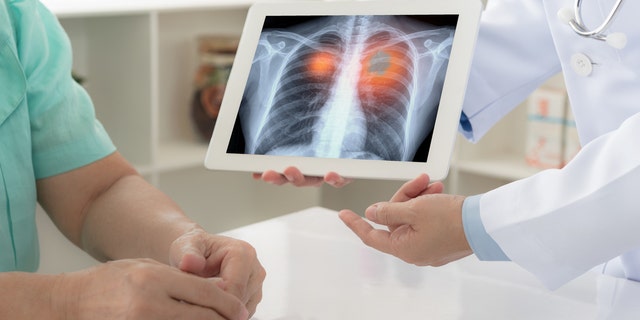
The researchers also found that 15% of the patients could have received targeted treatments if the origin of their cancer had been detected. (iStock)
“The findings are encouraging, and they provide important insight into how we might approach such complex cases,” he told Fox News Digital.
“However, it should be noted that the study’s retrospective nature means it needs further validation through field studies to assess its real-world performance.”
CLICK HERE TO SIGN UP FOR OUR HEALTH NEWSLETTER
When it comes to using this approach in the real world, Dai said that how physicians integrate and use such models in their daily practice is a critical factor.
“Their acceptance and effective incorporation of the model will be crucial in translating evidence into actionable strategies,” he said.
Dai reiterated that incorporating unstructured data, such as pathology images, could add more layers of information and improve predictive accuracy.
He added, “The integration of multiple data sources will almost certainly result in a more robust approach.”

Health
Your July 2024 Horoscope: Zodiac Sign Monthly Forecast | Woman's World

Sign Up
Create a free account to access exclusive content, play games, solve puzzles, test your pop-culture knowledge and receive special offers.
Already have an account? Login
Forgot your password?
Get back to the Sign In
Use left and right arrow keys to navigate between menu items.
Use escape to exit the menu.
Health
Childhood medical myths debunked as experts weigh in on 5 common warnings

Mothers might know best, but it’s not always easy to separate fact from fiction when it comes to health advice.
A new report from University of California San Francisco (UCSF) Health has broken down several common wellness myths that children often hear while growing up.
Fox News Digital spoke with experts who revealed the truth behind common medical misconceptions.
PSYCHOLOGISTS REVEAL 7 WAYS PARENTS CAN DRIVE HAPPINESS BY HELPING KIDS FIND THEIR PURPOSE
Here are five.
Myth 1. Ginger ale relieves stomach aches
While actual ginger can help ease a stomach ache, most commercial ginger ales don’t actually contain the real thing, Michelle Jaelin, a registered dietitian practicing in Ontario, Canada, told Fox News Digital.
A new report from University of California San Francisco (UCSF) Health reveals the truth about several common wellness myths that children often hear while growing up. (iStock)
This childhood myth persists as parents give ginger ale to children because it’s sweet and bubbly, she said.
“It makes parents feel better that they are doing something for their child when they aren’t feeling well, and the myth persisted as a drink that helps a stomach ache,” Jaelin said.
The carbonated beverages could actually make the stomach pain even worse by increasing gas in the digestive tract, according to Healthline’s website.
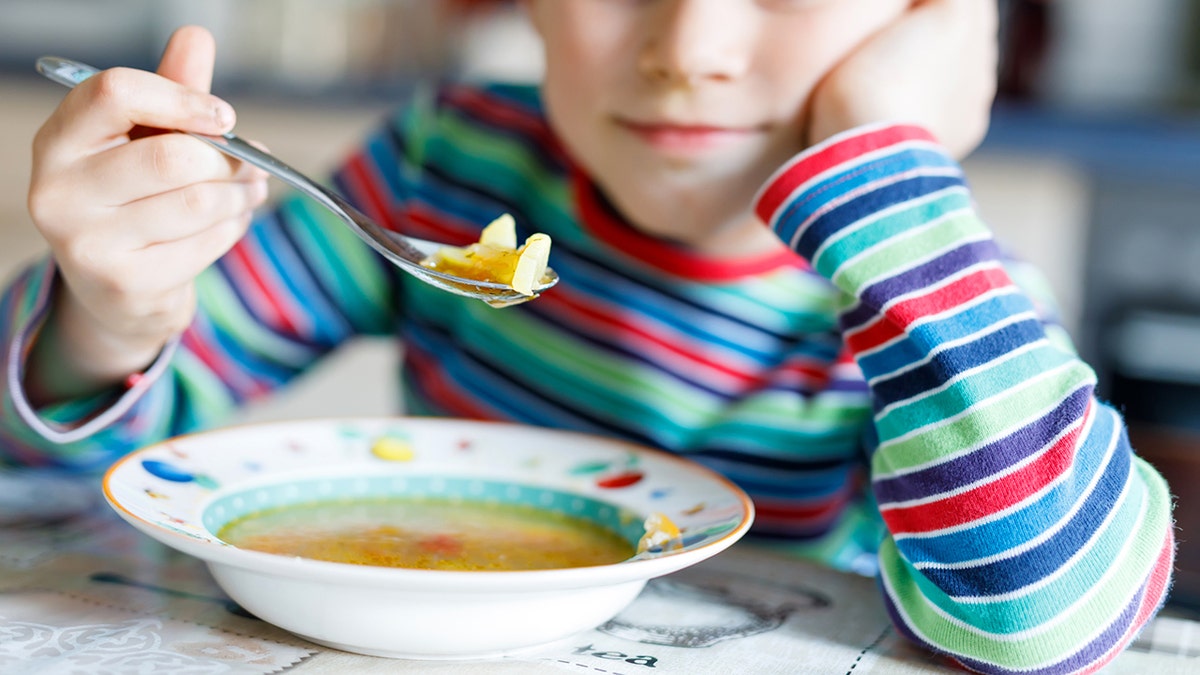
Chicken soup has been viewed as a popular cold remedy since at least the 12th century, according to the National Institutes of Health (NIH). (iStock)
Drinks with real ginger also tend to contain excess added sugar, experts said – essentially the equivalent of soda that may worsen stomach pain.
Myth 2. Gum stays in your stomach for seven years
“Swallowed gum does not stay in your stomach for [seven] years, as the myths suggest,” Su-Nui Escobar, a registered dietitian based in Miami, Florida, told Fox News Digital.
“While swallowing gum is not recommended, if you do so accidentally, you will likely pass it like any other indigestible food.”
ASK A DOCTOR: ‘IS IT DANGEROUS TO SWALLOW GUM?’
The gum will pass through the stomach within two hours and be excreted in the stool after approximately two to five days, just like other foods, according to the recent UCSF report.
Although chewing gum can stick to many surfaces — including walls or desks — it travels mostly intact through the gastrointestinal tract without sticking to the intestinal walls, the report notes.

“Swallowed gum does not stay in your stomach for [seven] years, as the myths suggest,” an expert told Fox News Digital. (iStock)
But experts still caution against children swallowing gum, because substantial amounts might cause an intestinal blockage, Escobar warned.
This is a particular concern among children who have underlying constipation, according to Mayo Clinic’s website.
“If you suspect a blockage, seek immediate medical attention,” Escobar advised.
Myth 3. You shouldn’t swim for 30 minutes after eating
As summer kicks into high gear, there is good news for any swimmer itching to get in the water after lunch. Yes, it is usually OK to swim right after you eat.
The myth that you shouldn’t swim immediately after eating stems from a theoretical concern that blood flow will be diverted away from the arms and legs to help digest food, potentially leading to an increased risk of drowning.
“Based on current research, eating before swimming is not affiliated with a risk of drowning, and can be dismissed as a myth.”
But a comprehensive American Red Cross scientific review on the effects of eating before swimming showed no effect on performance in the water after a meal.
“A recent literature review did not provide any information related to an increased risk of drowning due to consuming food before swimming,” Jodi Jensen, PhD, member of the American Red Cross Scientific Advisory Council in Virginia, told Fox News Digital.
AS DROWNING DEATHS INCREASE, EXPERTS OFFER WATER SAFETY TIPS
“There is no supporting evidence from a major medical or safety organization that recommends refraining from eating before engaging in aquatic activities such as swimming,” added Jensen, who is also an assistant professor and aquatics director at Hampton University in Hampton, Virginia.

“There is no supporting evidence from a major medical or safety organization that recommends refraining from eating before engaging in aquatic activities such as swimming,” an expert told Fox News Digital. (iStock)
“Based on current research, eating before swimming is not affiliated with a risk of drowning, and can be dismissed as a myth.”
Although study participants experienced “minimal” side effects at different time intervals after eating, some outside experts do recommend waiting a bit after a meal if you plan to swim laps or compete to avoid any stomach cramping or digestive issues.
Myth 4. Chicken soup cures a cold
Chicken soup has been viewed as a popular cold remedy since at least the 12th century, according to the National Institutes of Health (NIH).
ASK A DOCTOR: ‘DOES CHICKEN SOUP REALLY HELP CURE A COLD?’
“Chicken soup is warm and comforting when you’re sick, but it’s not a cure,” Jaelin told Fox News Digital.
“Chicken soup is warm and comforting when you’re sick, but it’s not a cure.”
“Drinking any hot broth when your sinuses are stuffed can help to clear them out.”
The steam from the chicken broth may relieve a sore throat and congested sinuses, the NIH noted.
For more Health articles, visit www.foxnews/health.
When battling a cold, get plenty of clear fluids to help regulate body temperature and promote improved immune system function, said Jaelin.
“Chicken soup counts toward overall fluid intake,” she added.
It also helps prevent dehydration and clear out mucus, the NIH noted.
Myth 5. You will ruin your eyes if you sit too close to the TV
Sitting too close to the TV will not damage your eyes, though it may cause eye strain, according to the American Academy of Ophthalmology.
NEBRASKA BABY BORN WITH CATARACTS HAS 3 EYE SURGERIES TO SAVE HER SIGHT: ‘I JUST KEPT PRAYING’
To prevent eye strain while watching television, experts recommend keeping the room well-lit and taking occasional breaks from the screen.
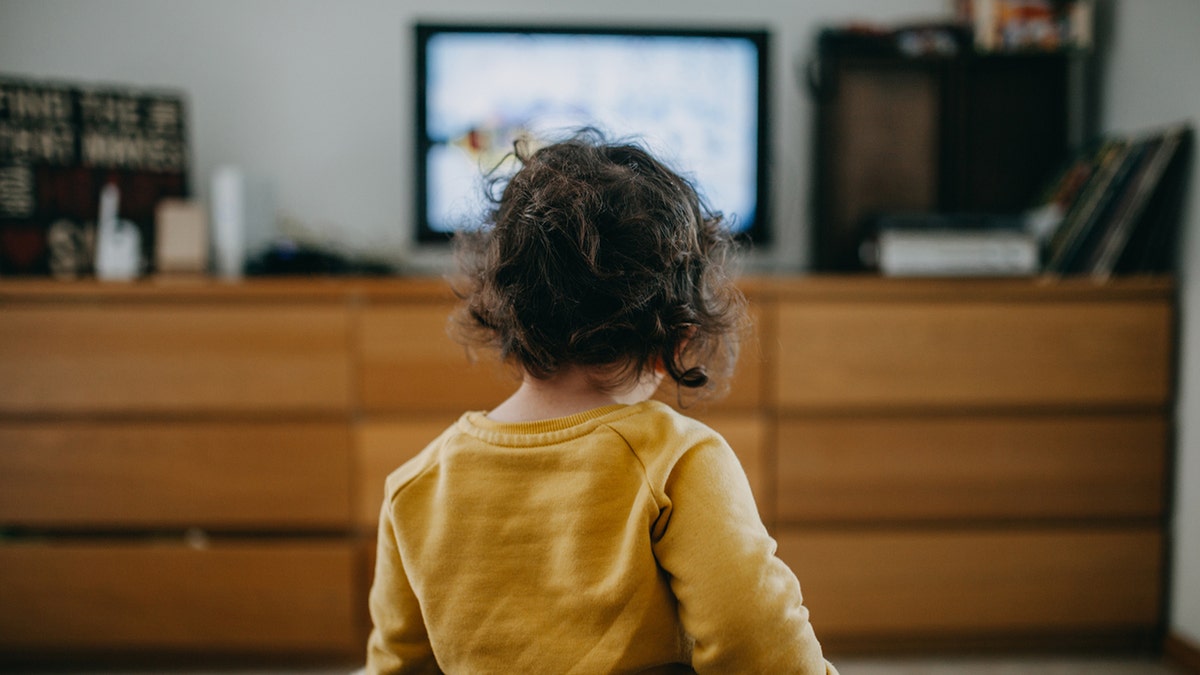
Sitting too close to the television will not damage your eyes, but may cause eye strain, according to the American Academy of Ophthalmology. (iStock)
“Children can focus at very close distances better than adults, and may not develop the same eye strain symptoms,” Nishika Reddy, M.D., assistant professor of ophthalmology at Moran Eye Center’s Midvalley Health Center at University of Utah in Murray, Utah, told Fox News Digital.
CLICK HERE TO SIGN UP FOR OUR HEALTH NEWSLETTER
It may be a red flag, though, if children are watching television too closely, experts warned.
The behavior may indicate an underlying vision issue that should be addressed, the UCSF report noted.
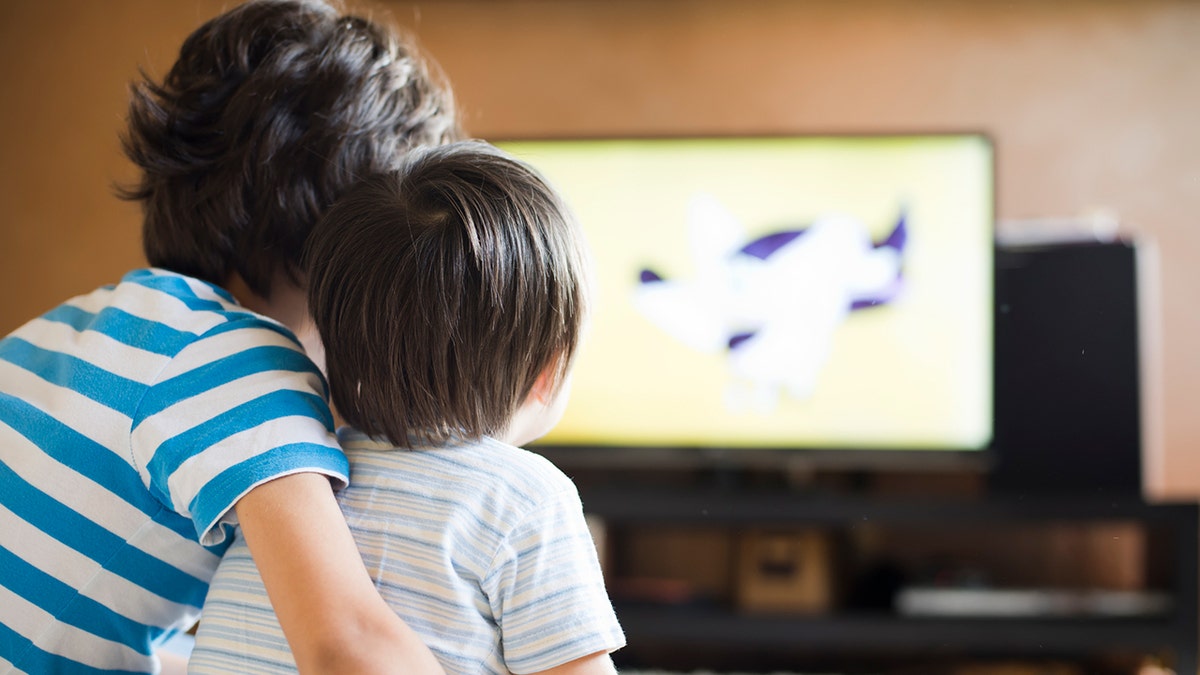
The American Academy of Pediatrics says high-quality digital media can be introduced to children between 18 and 24 months of age (only when supervised by parents or caregivers). The academy also recommends limiting screen time to one hour a day for children ages 2 to 5. (iStock)
“See an eye care provider to perform an eye exam for your child,” Reddy recommended.
A more concerning issue is the indirect effect of too much screen time, according to the report.
Although experts say there is no one-size-fits-all guideline when it comes to children and screen time, the American Academy of Pediatrics says high-quality digital media can be introduced to children between 18 and 24 months of age (only when supervised by parents or caregivers).
The academy also recommends limiting screen time to one hour a day for children ages 2 to 5.
Fox News Digital reached out to UCSF for additional comment about its new study.
Health
The Anti-Inflammatory and Mediterranean Diets: Two Immune System-Boosting Diets That Don't Skimp on Flavor | Woman's World

Sign Up
Create a free account to access exclusive content, play games, solve puzzles, test your pop-culture knowledge and receive special offers.
Already have an account? Login
Forgot your password?
Get back to the Sign In
Use left and right arrow keys to navigate between menu items.
Use escape to exit the menu.
-

 News1 week ago
News1 week agoNYC pastor is sentenced to 9 years for fraud, including taking a single mom's $90,000
-

 News1 week ago
News1 week agoRead the Ruling by the Virginia Court of Appeals
-

 News7 days ago
News7 days agoTracking a Single Day at the National Domestic Violence Hotline
-

 Politics1 week ago
Politics1 week agoTrump classified docs judge to weigh alleged 'unlawful' appointment of Special Counsel Jack Smith
-

 News7 days ago
News7 days agoSupreme Court upholds law barring domestic abusers from owning guns in major Second Amendment ruling | CNN Politics
-

 Politics7 days ago
Politics7 days agoSupreme Court upholds federal gun ban for those under domestic violence restraining orders
-

 News1 week ago
News1 week agoOpinion: Extreme heat kills. What the US can do to protect the most vulnerable | CNN
-

 Crypto1 week ago
Crypto1 week agoFactors Driving the Evolution of Cryptocurrency Markets














